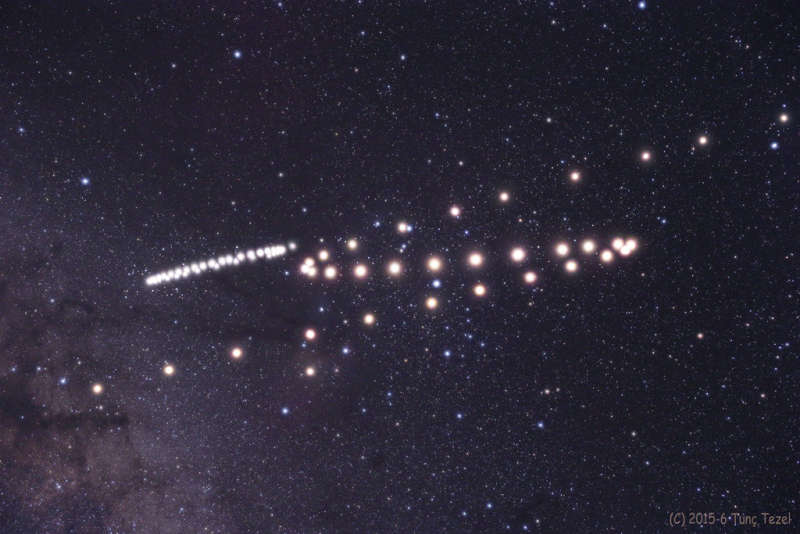
|
Credit & Copyright: Tunç Tezel
(TWAN)
Explanation:
Wandering Mars and
Saturn have spent much of this year
remarkably close in planet Earth's
night sky.
In a sequence of exposures spanning mid-December 2015
through the beginning of this week,
this
composited skyview follows their time together, including both
near opposition,
just north of bright star Antares near the Milky Way's central bulge.
In the
corresponding video, Saturn's apparent movement is
seen to be back and forth along the flattened,
compact loop, while Mars traces the wider,
reversing S-shaped track from upper right to lower left through
the frame.
To connect the dots and dates just slide your cursor over the picture
(or follow this link).
It looks that way, but Mars and Saturn don't actually reverse
direction along their orbits.
Instead, their apparent backwards or retrograde motion with
respect to the background stars is a
reflection of the orbital motion of the Earth itself.
Retrograde motion can be seen
each time Earth overtakes and laps planets orbiting farther from the Sun,
the Earth moving more rapidly through its own relatively close-in orbit.
|
January February March April May June July August September October November December |
| ||||||||||||||||||||||||||||||||||||||||||||||||
NASA Web Site Statements, Warnings, and Disclaimers
NASA Official: Jay Norris. Specific rights apply.
A service of: LHEA at NASA / GSFC
& Michigan Tech. U.
Based on Astronomy Picture
Of the Day
Publications with keywords: Mars - Saturn
Publications with words: Mars - Saturn
See also:
- APOD: 2025 November 16 Á Crossing Saturns Ring Plane
- APOD: 2025 September 28 Á Leopard Spots on Martian Rocks
- APOD: 2025 September 25 Á Saturn Opposite the Sun
- APOD: 2025 September 22 Á Equinox at Saturn
- APOD: 2025 July 15 Á Collapse in Hebes Chasma on Mars
- APOD: 2025 July 6 Á The Spiral North Pole of Mars
- APOD: 2025 June 29 Á Dark Sand Cascades on Mars
